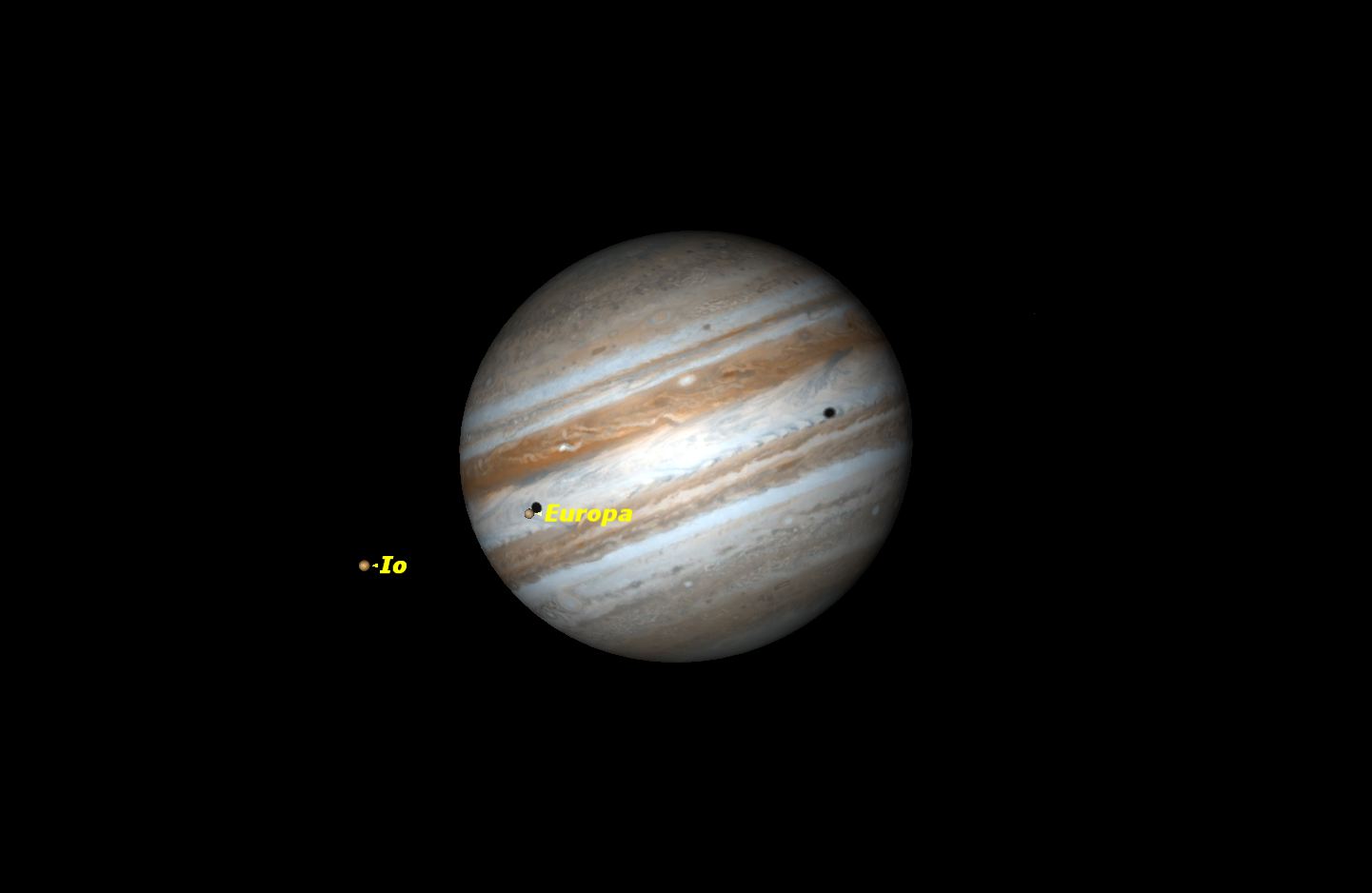 | |||||||||||||||||||||||||||||||||||||||||||||||
| For education orders please call 1-877-290-8256. Welcome to the December Featured Article! Another Moon Dance on Jupiter Geoff Gaherty, Starry Night EducationAs Jupiter’s moons revolve around the giant planet, they regularly pass in front of it and cast their shadows on its face. From time to time, the moons’ positions in orbit are such that two or three moons (and their shadows) can pass across Jupiter at the same time. On the night of Monday, December 15, we will witness one of these double transits. 
On the night of Monday, December 15, we will see another of the current series of double shadow crossings on Jupiter. The moons Io and Europa will cast their shadows on opposite limbs of the giant planet. Credit: Starry Night software. I’ll describe the events on Monday night as seen from eastern North America (Eastern Standard Time). Observers further west will have to subtract one (CST) to three (PST) hours to get their local times. The shadows cast by the moons on Jupiter are very tiny, and are only visible in telescopes with at least 90mm aperture magnifying at least 100 times. By the time Jupiter is high enough to observe, around 11 p.m., the show is about to begin. At 11:09, a tiny notch will appear on Jupiter’s left limb, as the shadow of Europa begins across. "Left" here refers to the naked eye view in the northern hemisphere. In most reflector telescopes and refractors and catadioptric with diagonals, this will actually be the right side of the planet. A little over two hours later at 1:12 a.m., Io’s shadow follows Europa’s onto Jupiter’s face. Europa’s shadow is now two-thirds of the way across Jupiter. A few minutes later, at 1:18, Europa itself begins across Jupiter, almost in front of Io’s shadow. Although visible as a bright point of life for a few minutes, Europa soon blends into the background of Jupiter’s clouds, visible only in very large telescopes. At 2:02, Europa’s shadow passes off Jupiter, and at 2:15, the moon Io begins across. Again it fades to invisibility a few minutes later. At 3:29, Io’s shadow leaves. A few minutes before Europa’s transit ends at 04:12, the moon becomes visible just inside Jupiter’s limb. Finally, at 4:32, Io leaves Jupiter’s face and the show is over. If you miss this event, don’t be too disappointed, because this is only one of a series of double transits, leading up to a rare triple transit on the night of January 24. |
| ||||||||||||||||||||||||||||||||||||||||||||||
© 2016 Simulation Curriculum Corp. All Rights Reserved. |
|||||||||||||||||||||||||||||||||||||||||||||||
